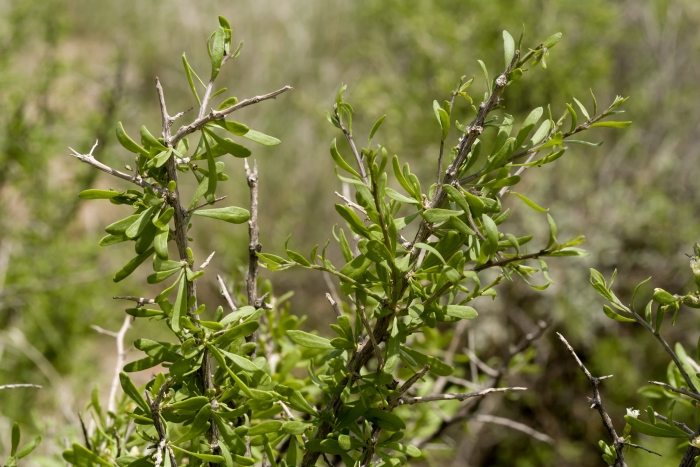Berlandier’s Wolfberry
(Lycium berlandieri)
Berlandier’s Wolfberry (Lycium berlandieri)
/
/

Patrick Alexander from Las Cruces, NM
CC0





















































Estimated Native Range
Summary
Berlandier’s Wolfberry is valued for its drought tolerance and ability to thrive in harsh conditions, making it suitable for xeriscaping and naturalistic plantings in arid regions. It is also used for habitat restoration projects. The plant’s longevity, with an average lifespan of 90 years, ensures its presence in the landscape for generations. In cultivation, it requires full sun exposure and well-drained soils, tolerating a range of soil types from sandy to loamy. It is low maintenance, needing minimal supplemental water once established. While not commonly used in ornamental horticulture, its berries are edible and have been used in traditional medicine.CC BY-SA 4.0
Plant Description
- Plant Type: Shrub
- Height: 3-6.5 feet
- Width: 3-6 feet
- Growth Rate: Moderate
- Flower Color: Blue, Purple, White
- Flowering Season: Winter, Spring, Fall, Summer
- Leaf Retention: Deciduous
Growth Requirements
- Sun: Full Sun
- Water: Low
- Drainage: Fast
Common Uses
Bee Garden, Bird Garden, Butterfly Garden, Deer Resistant, Edible*Disclaimer: Easyscape's listed plant edibility is for informational use. Always verify the safety and proper identification of any plant before consumption., Erosion Control, Hummingbird Garden, Low Maintenance
Natural Habitat
native to the desert regions, arid shrublands, and thorn scrub of Mexico, as well as the southwestern United States, including Arizona, New Mexico, and Texas
Other Names
Common Names: Berlandier Wolfberry
Scientific Names: , Lycium berlandieri, Lycium berlandieri var. peninsulare, Lycium berlandieri var. berlandieri, Lycium barbinodum, Lycium berlandieri subsp. peninsulare, Lycium stolidum, Lycium palmeri, Lycium berlandieri var. barbinodum, Lycium peninsulare
GBIF Accepted Name: Lycium berlandieri Dunal